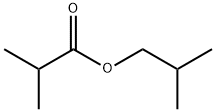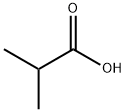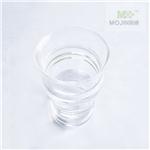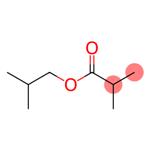Description
Isobutyl isobutyrate has an odor and taste reminiscent of pineapple. It is used as a flavoring agent, insect repellent, and a substitute for methyl amyl acetate in nitrocellulose lacquers and thinners.
Chemical Properties
The liquid is colorless to light yellow. It has the aroma of pineapple, grape skin, and ether. Its boiling point is 147-148°C, and its flash point is 37°C. It can dissolve in most organic solvents but is not soluble in water. It is found naturally in wine, olives, bananas, melons, strawberries, grapes, beer flower oil, white wine, quince, etc.
Occurrence
Reported found in the essential oil of hops, grapes, apricot, banana, melon, strawberry, cider, passion fruit wine,
sherry, grape wines, whiskey, olive, quince, plum wine, laurel, myrtle leaf and berry, Chinese quince and Roman chamomile oil.
Uses
Isobutyl isobutyrate is used principally as a solvent, especially for nitrocellulose lacquers and thinners as well as coatings for plastic substrates, and high-solids coatings. The majority of end uses are in coatings (automotive, industrial, wood furniture, and graphic arts).
Definition
ChEBI: 2-Methylpropyl 2-methylpropionate is a carboxylic ester.
Preparation
The compound may be synthesized by catalytic reaction passing vapors of isobutyl alcohol over CuO + Al2O3, ZnO + Al2O3, or CuO + ZnO + Al2O3 at 350 - 400°C under pressure.
Aroma threshold values
Detection: 36 ppb to 4.37 ppm; aroma characteristics at 1.0%: sweet, estry and fruity, winey, plum, apple
and banana-like
General Description
Isobutyl isobutyrate appears as a colorless liquid with a pleasant fruity odor. Moderately toxic by inhalation. Insoluble in water and floats on water, but soluble in alcohol and ethers. It is used as a flavoring and in the manufacture of insecticides.
Air & Water Reactions
Highly flammable. Insoluble in water.
Reactivity Profile
Isobutyl isobutyrate, [FLAMMABLE LIQUID] reacts with acids to liberate heat along with alcohols and acids. Strong oxidizing acids may cause a vigorous reaction that is sufficiently exothermic to ignite the reaction products. Heat is also generated by the interaction with caustic solutions. Flammable hydrogen is generated by mixing with alkali metals and hydrides.
Hazard
Toxic by inhalation.
Health Hazard
Exposure can cause irritation of eyes, nose and throat. Toxic by inhalation.
Toxics Screening Level
Using the NOAEL of 1000 mg/kg from the gavage study, where (1 kg)/(.93 m3) is the inhalation rate for Wistar rats as
cited in EPA 1988.
Therefore an AAC of 300 μg/m3, with annual averaging, should be
acceptable.






